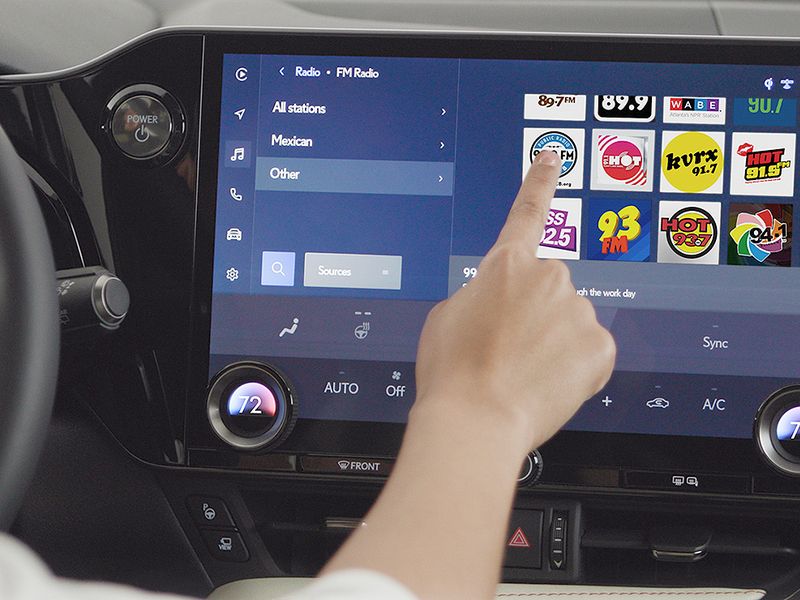
PLANO, Texas — For years, Lexus dealers and brand leaders have admitted that the weakest link across the Japanese luxury brand’s lineup has been right there at their fingertips.
Whether it was a joystick or unwieldy touchpad, the center console-mounted controls for the brand’s lackluster infotainment system have hurt its vehicles with reviewers and customers, which has cost it sales.
After three years of in-house effort, Lexus will debut a next-generation intuitive infotainment system, dubbed Lexus Interface, on the redesigned NX compact crossover and quickly spread it across the rest of the lineup.
“Honestly, it’s been the Achilles’ heel of our brand,” said Cooper Ericksen, group vice president for product planning and strategy for Toyota Motor North America.
“With all the pain that we have endured with remote touch interface and joysticks? Believe me, we want to go as fast as humanly possible” to get the new system installed in the rest of Lexus’ models.
Lexus Interface is a ground-up redesign of the brand’s infotainment system that’s been in development by subsidiary Toyota Connected since 2018, and it was specifically designed for North American customers.
The system resides on a touch screen, employs a wide range of voice-activated functions, can be updated over the air, has user profiles that allow individual settings to follow the user from Lexus product to Lexus product and features enhanced navigation and a virtual digital assistant.
In short: It is everything that Lexus’ current infotainment system is not.
“The system has so much gravity to pull customers in and keep them happy,” Charan Lota, executive chief engineer of connected technologies for Toyota Motor North America, told Automotive News this month at an event here to introduce Lexus Interface. “You can always get into a data spreadsheet thing — how much processor power do you have, how much memory do you have, what’s your screen pixelation, all these things — and that is a very big part of the discussion. But the point that we really try to emphasize with our system is ease of use.”
With a touch screen of up to 14 inches upon which to build their system, Lota and his hundreds of fellow designers could have filled their digital canvas with all manner of menus and controls and minute adjustable settings.
Instead, they chose a simple design, enabling voice controls as much as possible — including the ability to open windows and the moonroof by voice, or turn on the heated, vented seats, if desired — through a new conversational virtual digital assistant.
The goal: Make it as simple as possible for the user to get done what they want to get done.
“From a safety point of view, eyes on road is the safest place to be,” Lota said. “If we can accomplish it with voice, we prioritize that. If we can’t do it with voice, let’s do it with no more than a couple clicks of a button, not searching deep into submenus.”
In a demonstration here, Lota showed how quickly and seamlessly Lexus Interface pairs with a user’s smartphone via voice command. Apple Music and Amazon Music functionality will be built in from the start, but other popular streaming services, including Pandora, will still have to run through the user’s digital device.
Apple CarPlay and Android Auto will still be available, though Lota said he hopes customers will see the capabilities of Lexus Interface and use the embedded system.
Lexus will also allow its customers to easily opt out of any data collection from its infotainment system.
While Lexus Interface will debut on the NX late this year, Ericksen said that it will be rolled out across the vast majority of the brand’s products by the end of 2023, though “there will be some stragglers, based on product life cycle.”

